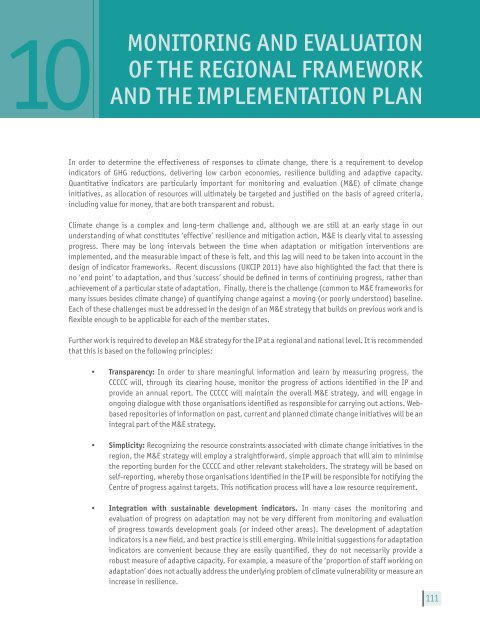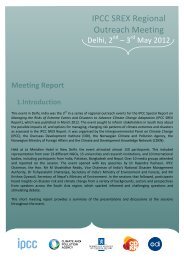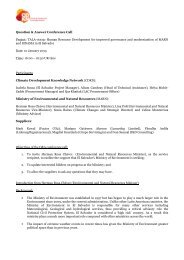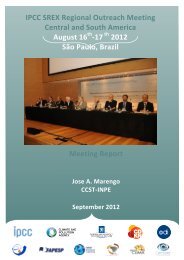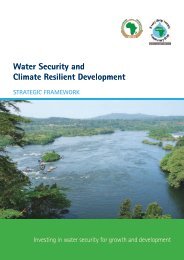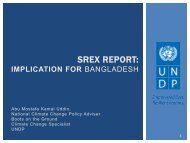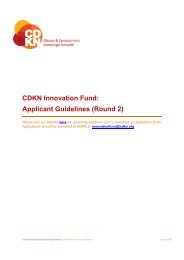Implementation Plan - CDKN Global
Implementation Plan - CDKN Global
Implementation Plan - CDKN Global
- No tags were found...
Create successful ePaper yourself
Turn your PDF publications into a flip-book with our unique Google optimized e-Paper software.
10DELIVERING TRANSFORMATIONAL CHANGE 2011-21MONITORING AND EVALUATIONOF THE REGIONAL FRAMEWORKAND THE IMPLEMENTATION PLANIn order to determine the effectiveness of responses to climate change, there is a requirement to developindicators of GHG reductions, delivering low carbon economies, resilience building and adaptive capacity.Quantitative indicators are particularly important for monitoring and evaluation (M&E) of climate changeinitiatives, as allocation of resources will ultimately be targeted and justified on the basis of agreed criteria,including value for money, that are both transparent and robust.Climate change is a complex and long-term challenge and, although we are still at an early stage in ourunderstanding of what constitutes ‘effective’ resilience and mitigation action, M&E is clearly vital to assessingprogress. There may be long intervals between the time when adaptation or mitigation interventions areimplemented, and the measurable impact of these is felt, and this lag will need to be taken into account in thedesign of indicator frameworks. Recent discussions (UKCIP 2011) have also highlighted the fact that there isno ‘end point’ to adaptation, and thus ‘success’ should be defined in terms of continuing progress, rather thanachievement of a particular state of adaptation. Finally, there is the challenge (common to M&E frameworks formany issues besides climate change) of quantifying change against a moving (or poorly understood) baseline.Each of these challenges must be addressed in the design of an M&E strategy that builds on previous work and isflexible enough to be applicable for each of the member states.Further work is required to develop an M&E strategy for the IP at a regional and national level. It is recommendedthat this is based on the following principles:• Transparency: In order to share meaningful information and learn by measuring progress, theCCCCC will, through its clearing house, monitor the progress of actions identified in the IP andprovide an annual report. The CCCCC will maintain the overall M&E strategy, and will engage inongoing dialogue with those organisations identified as responsible for carrying out actions. Webbasedrepositories of information on past, current and planned climate change initiatives will be anintegral part of the M&E strategy.• Simplicity: Recognizing the resource constraints associated with climate change initiatives in theregion, the M&E strategy will employ a straightforward, simple approach that will aim to minimisethe reporting burden for the CCCCC and other relevant stakeholders. The strategy will be based onself-reporting, whereby those organisations identified in the IP will be responsible for notifying theCentre of progress against targets. This notification process will have a low resource requirement.• Integration with sustainable development indicators. In many cases the monitoring andevaluation of progress on adaptation may not be very different from monitoring and evaluationof progress towards development goals (or indeed other areas). The development of adaptationindicators is a new field, and best practice is still emerging. While initial suggestions for adaptationindicators are convenient because they are easily quantified, they do not necessarily provide arobust measure of adaptive capacity. For example, a measure of the ‘proportion of staff working onadaptation’ does not actually address the underlying problem of climate vulnerability or measure anincrease in resilience.111


